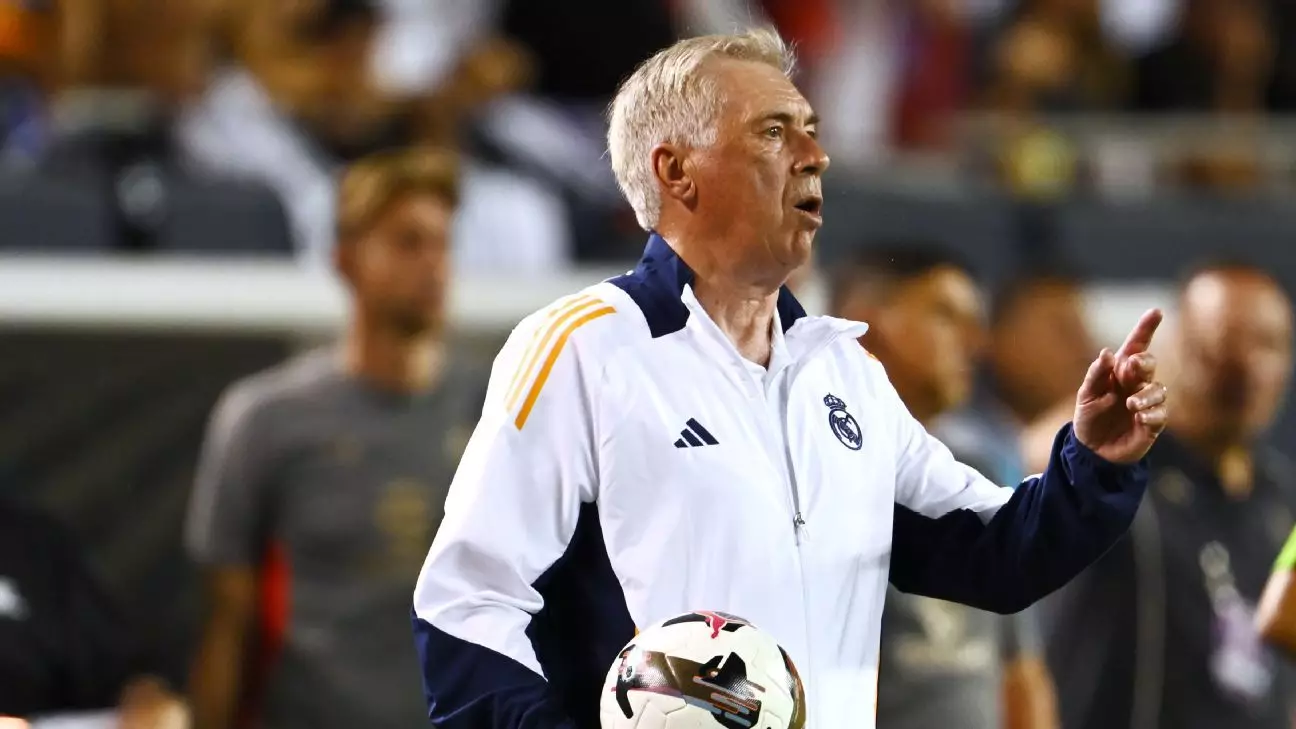The world of professional football finds itself at a crossroads, grappling with an increasingly demanding schedule that threatens player health and the integrity of the sport. In a candid reflection on these issues, Real Madrid’s head coach Carlo Ancelotti highlighted an area of concern that reverberates across leagues and teams worldwide—the unsustainable workload facing top-tier footballers. As international competitions expand and place mounting demands on athletes, Ancelotti’s observations push for a crucial reevaluation of how many games are played and, potentially, how player salaries are structured.
Ancelotti suggested that many players might willingly accept a reduction in salary if it meant they could play fewer matches. This striking assertion underscores an emerging consensus among players concerning their physical and mental strains. The prospect of playing up to 85 games in a single season, fueled by an expanded Champions League and a redesigned Club World Cup, raises legitimate fears of burnout and injury. Notably, Manchester City’s Rodri expressed the urgency of these issues, even hinting at potential strike actions, a move that could have profound implications for the sport.
Such sentiments suggest that the football community may be approaching a tipping point. Concerns about player fatigue have garnered the attention of players, coaches, and media alike. Ancelotti himself called for reflection, emphasizing that the current game calendar is out of sync with the well-being of athletes. His remarks suggest an acute awareness of the dangers posed by excessive game loads—issues including chronic injuries and diminished performance levels, which could compromise the artistry and competitiveness of the sport.
Although the scheduling dilemmas seem entrenched and resistant to immediate change, Ancelotti recognized that discussions around reform must persist. His acknowledgment that the current calendar would not shift for the ongoing season highlights the systemic issues plaguing football administration. The necessity for holistic changes is paramount, yet stakeholders must accommodate the diverse interests within the football ecosystem, from club management to broadcasting executives.
Ancelotti’s insight into the need for a nuanced approach—specifically regarding player and team dynamics—calls for us to consider practical solutions. Transitioning to fewer matches would not only benefit players’ physical health but also elevate the quality of matches, potentially drawing in more spectators eager for high-stakes, high-quality football.
From Ancelotti’s perspective, though Real Madrid is currently third in La Liga, the team is not yet at peak performance. His articulation of the need for gradual improvements reveals a pragmatic outlook, emphasizing patience and the importance of finding balance. He explained that optimal performance levels typically envelop teams in October or November, allowing them to gather momentum throughout the season. Therefore, Ancelotti’s nurturing approach is indicative of a long-term vision that values organic progression over immediate results.
In assessing tactical strategies, Ancelotti indicated that achieving balance isn’t merely a product of formation changes—rather, it is a collective endeavor that necessitates cohesive teamwork and player sacrifice. This holistic view serves as a reminder that football’s complexities require comprehensive understanding, touching not only on formations and tactics but also on chemistry and collective spirit.
The integration of new talent, such as Brazilian forward Endrick, also looms large in the discussion of player workload and future outcomes. Endrick’s promising performances suggest that youth can be a boon, but it also raises questions about how to handle the development of young players responsibly amid a demanding schedule. Ancelotti’s commitment to signaling this new talent as a starter in future games suggests a belief in the necessity of nurturing future stars, even while grappling with the risks inherent in overworking players.
As Eduardo Camavinga prepares for his return from injury, his situation transports us back to the crux of the issue: player welfare. The pressure of competitive football must navigate the delicate balance between ambition, result-oriented goals, and fundamental health considerations.
Carlo Ancelotti’s reflections illuminate a critical juncture in football’s evolution. As the sport wrestles with the consequences of its rigorous schedules, the voices advocating for player welfare and a reduction in matches must grow louder. Fostering an environment where athletes can thrive physically and mentally should be the priority. Achieving a sustainable balance between the demands of international competition and the well-being of the players may ultimately render a healthier, more competitive football landscape for future generations.


Leave a Reply